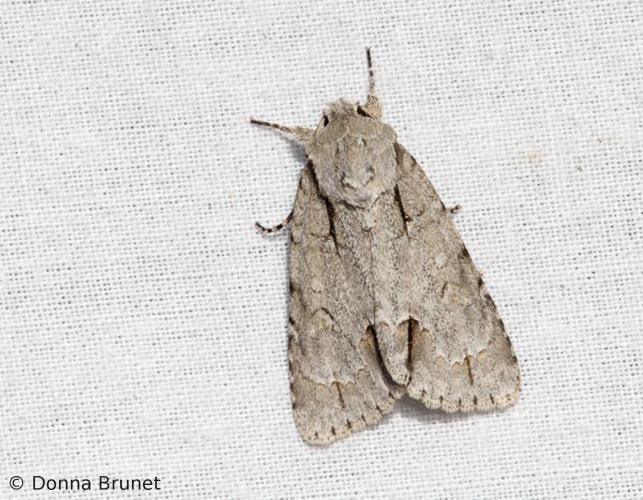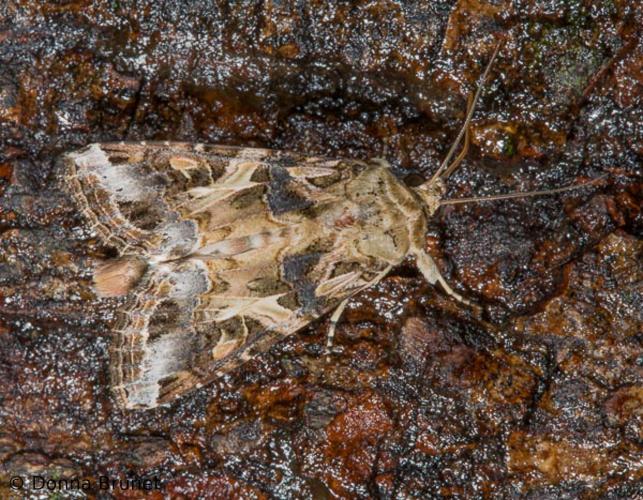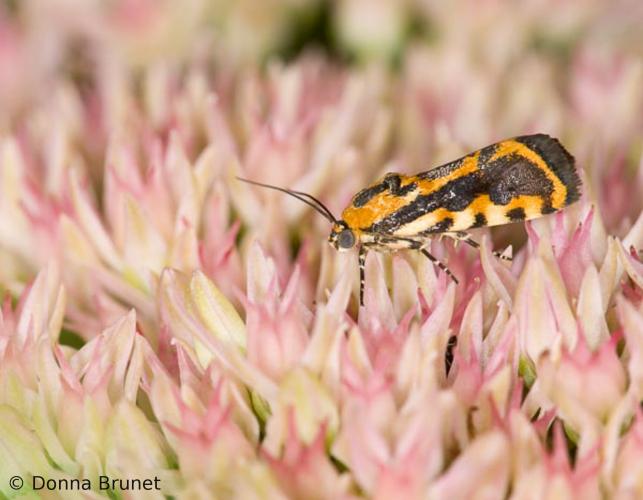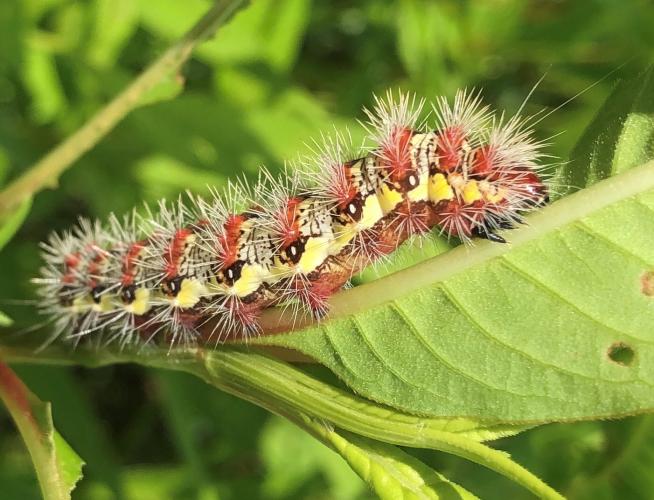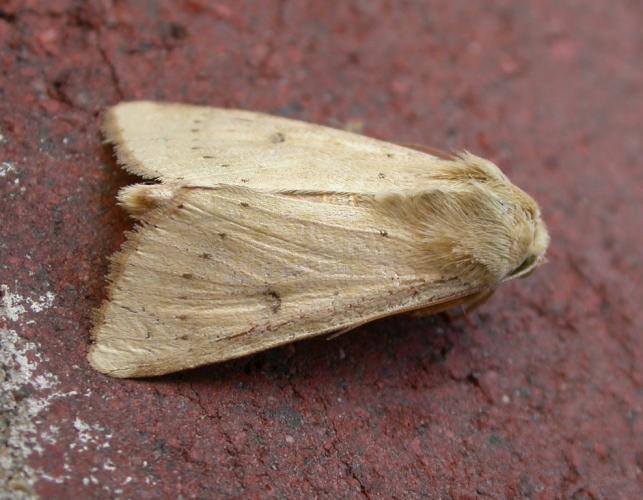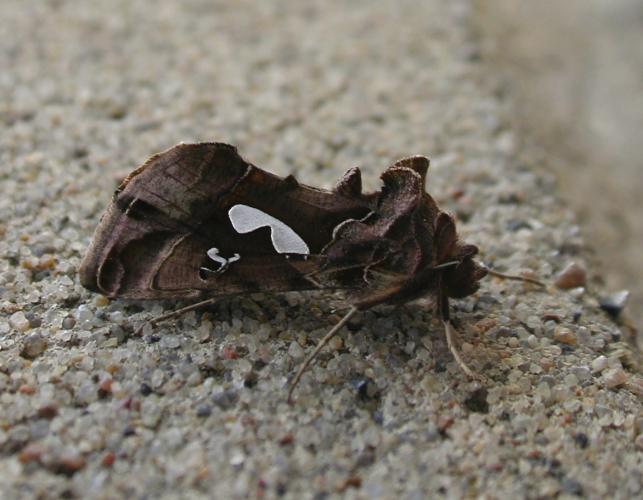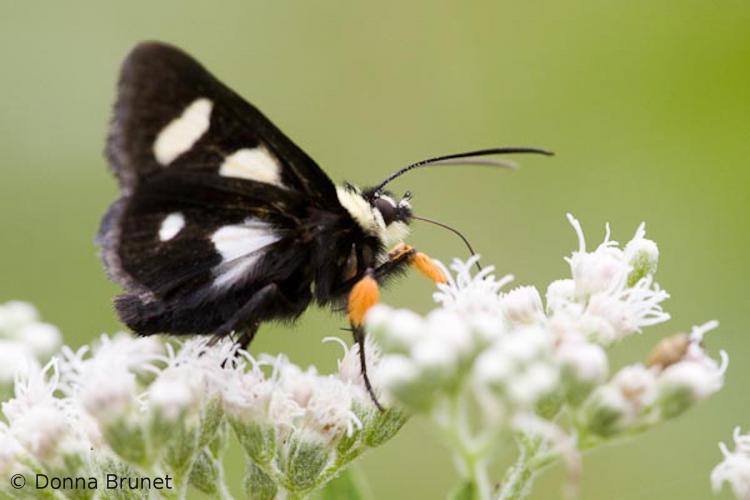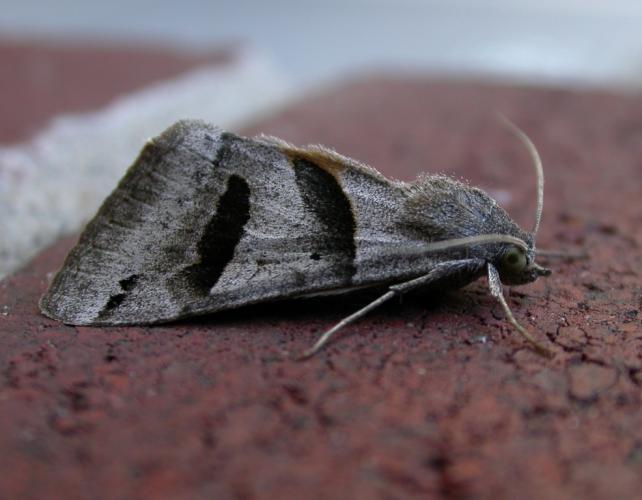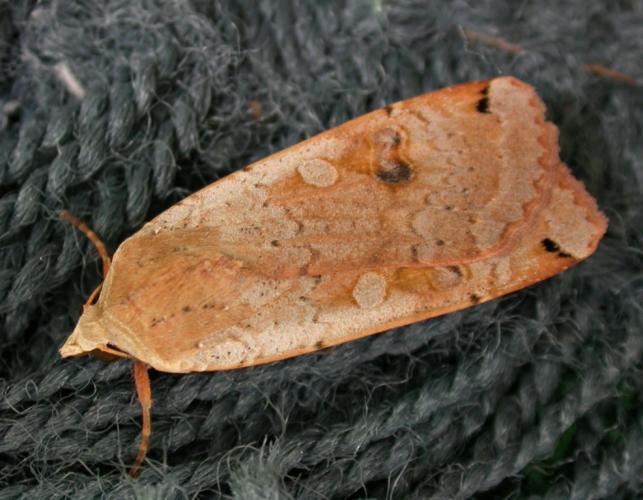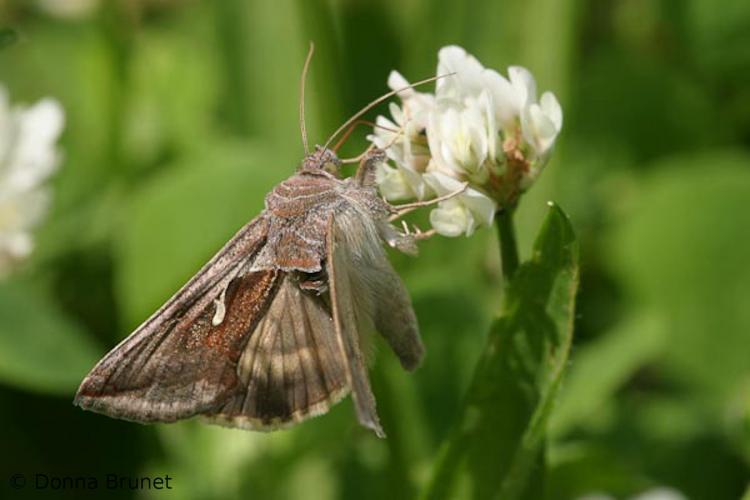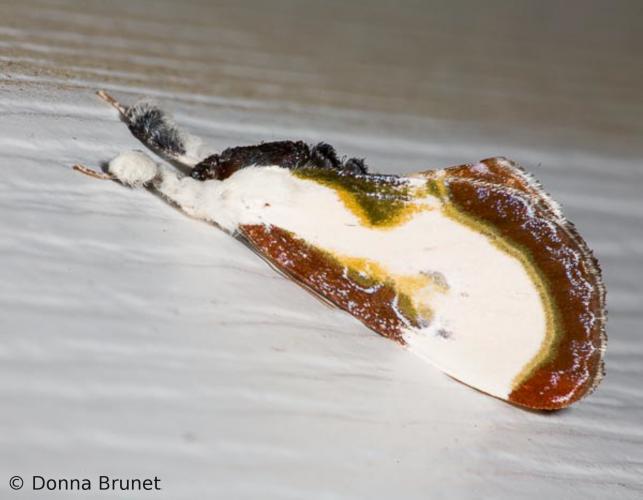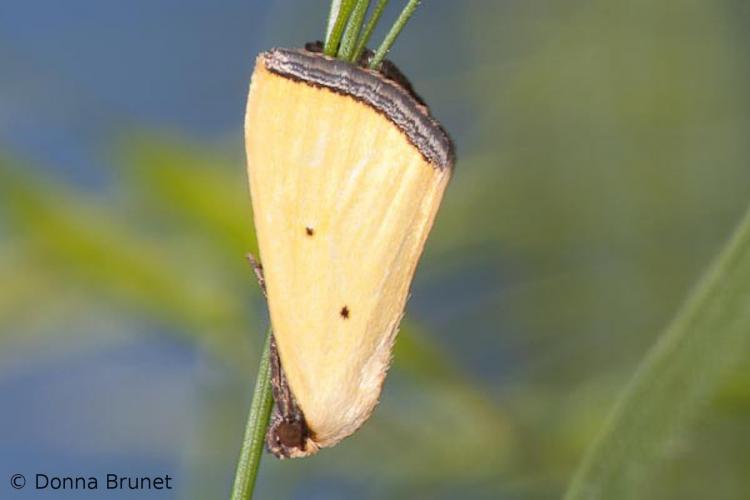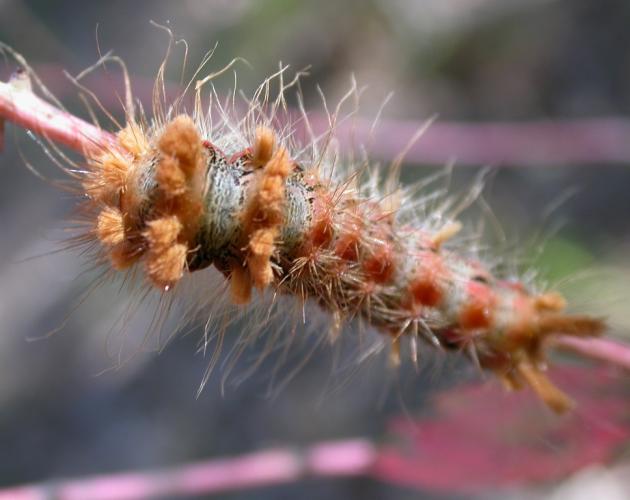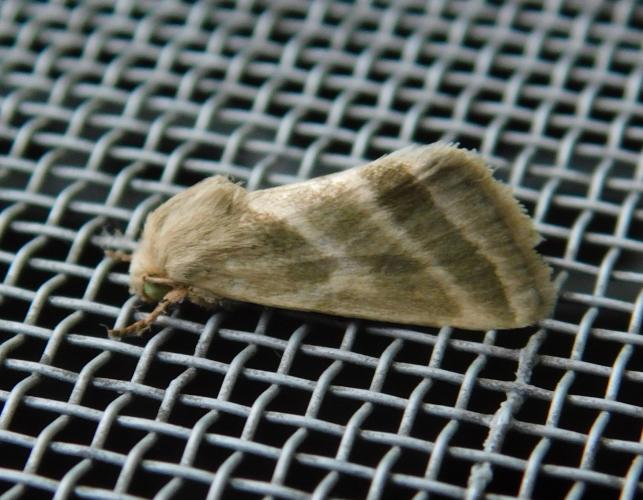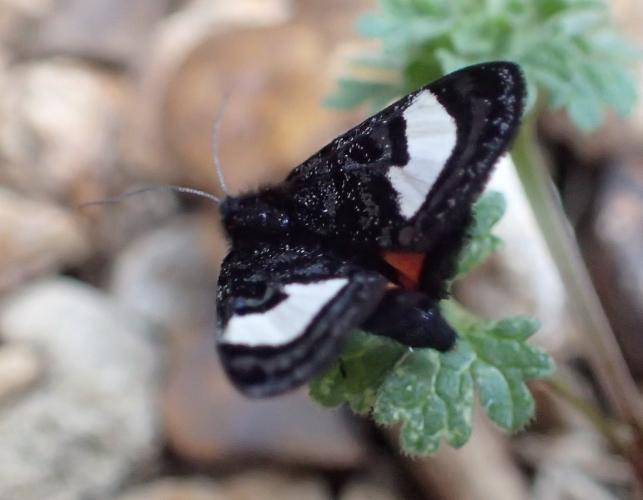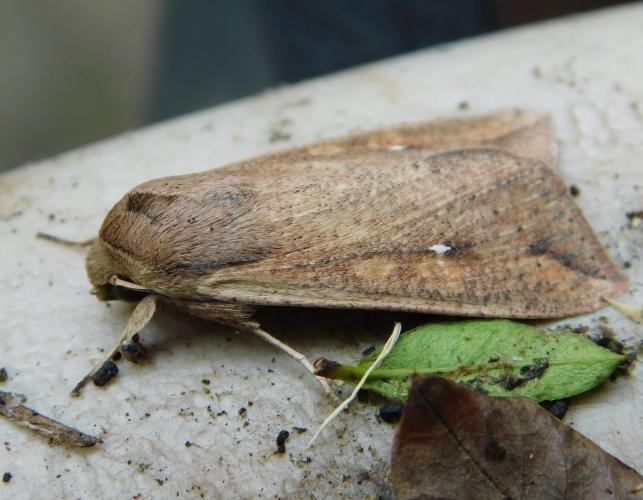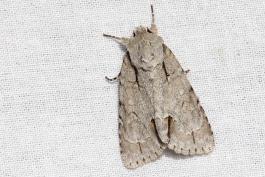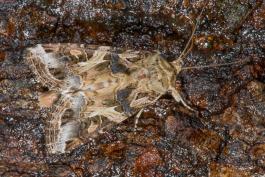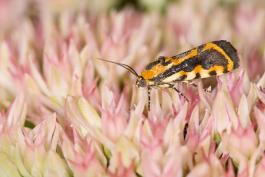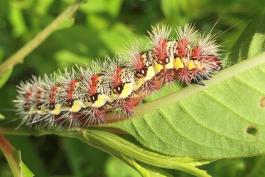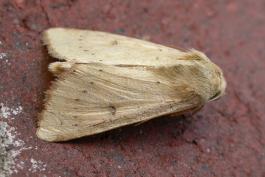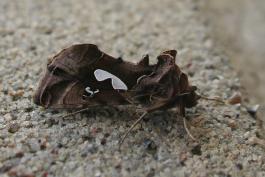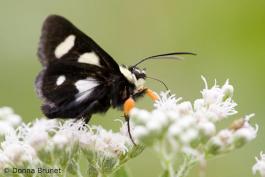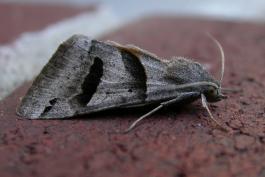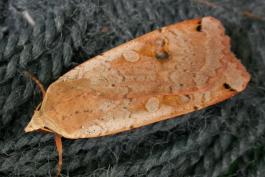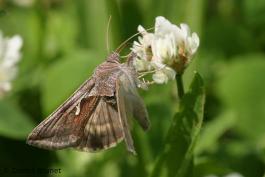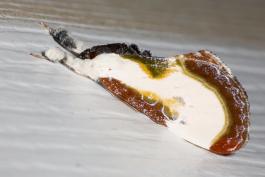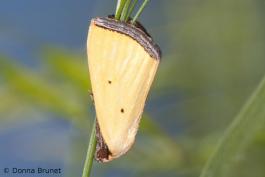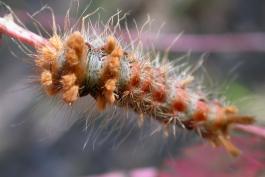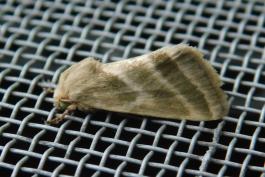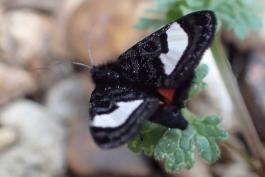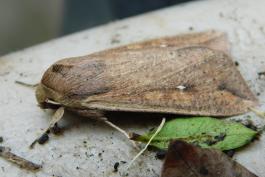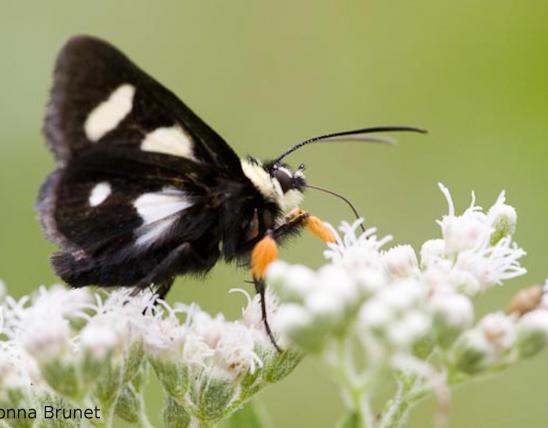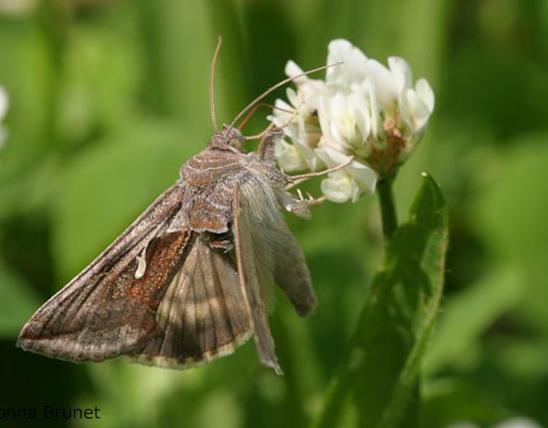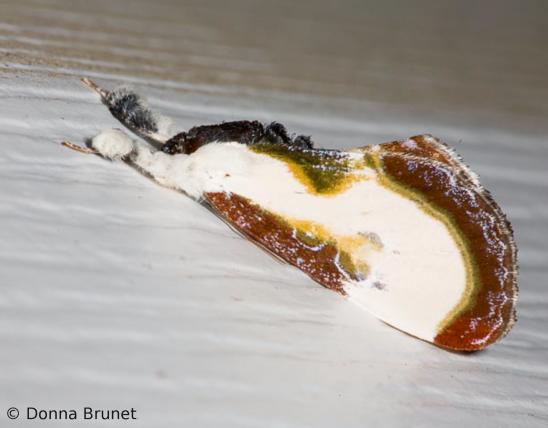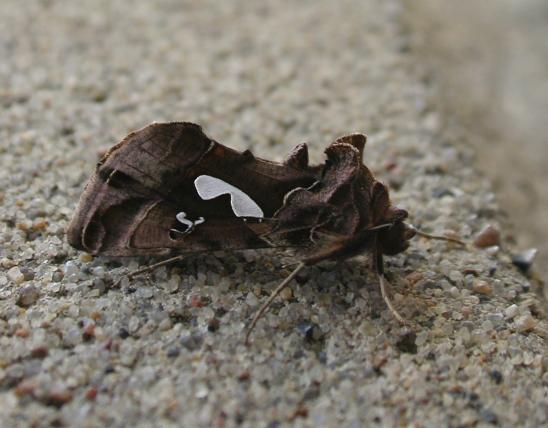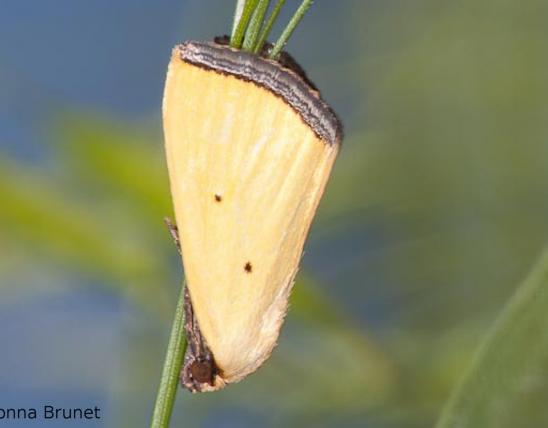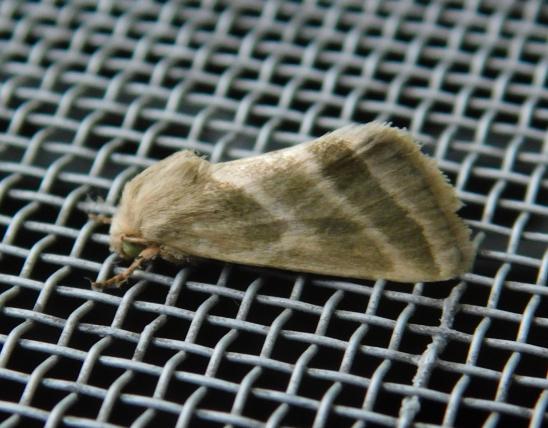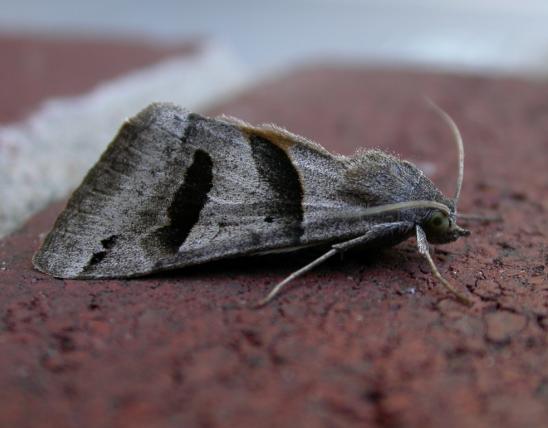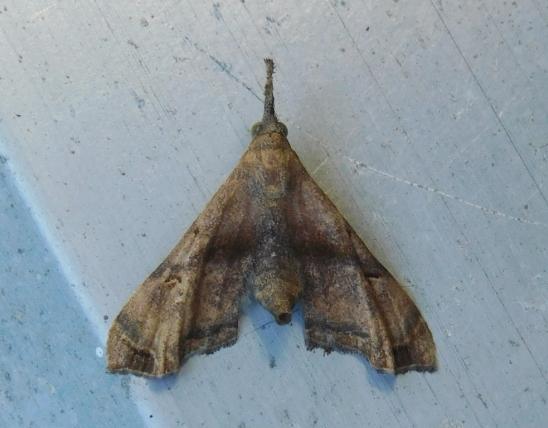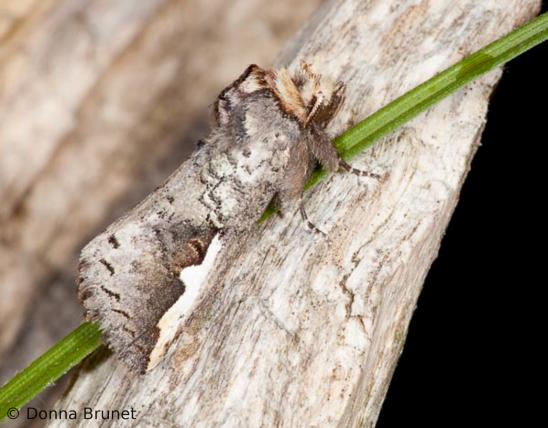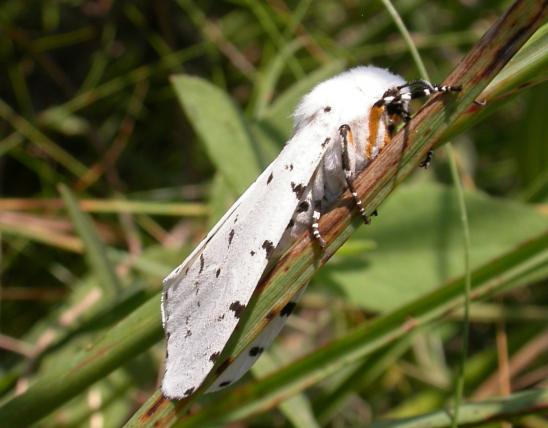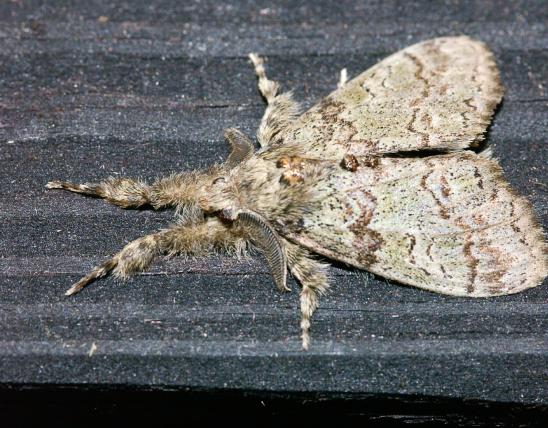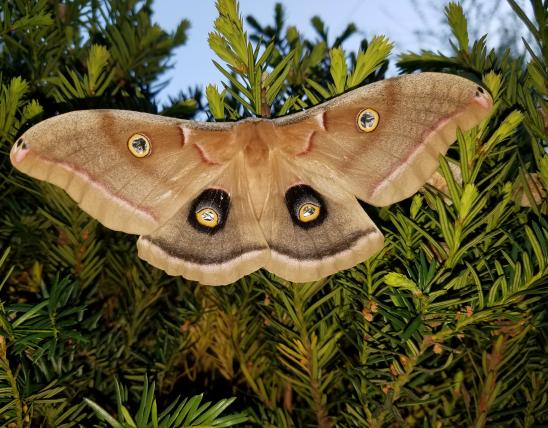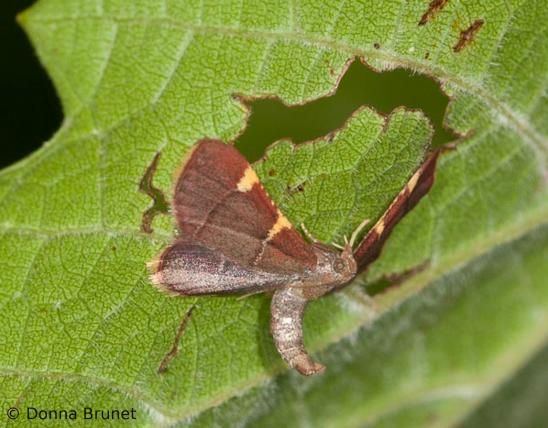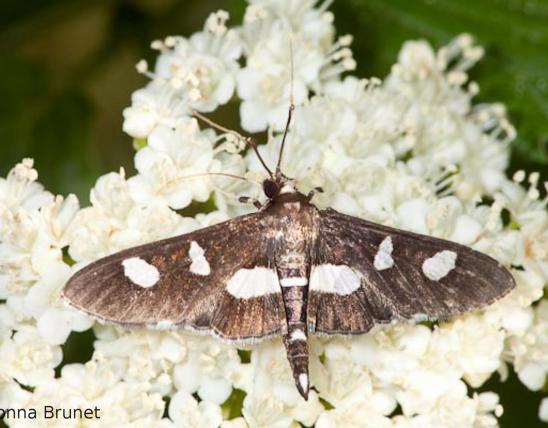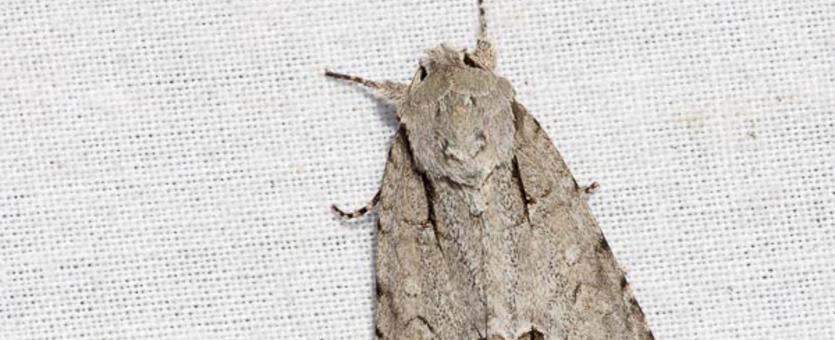
Adult noctuid moths may be small to large, generally have a heavy body for their size, and hold their wings tentlike over their bodies. Most noctuids are camouflaged with lines and spots to resemble tree bark or bird droppings, but they can be subtly gorgeous with ornate patterns on their gray or tan wings. Some noctuids are colorful; usually, moths with bright reds, oranges, or yellows with black markings are toxic or unpalatable to predators, and the bright colors serve as a warning, and therefore a defense.
This is a large family that includes dagger, owlet, and bird-dropping moths, and more. The group also includes armyworms, cutworms, corn earworms, the iris borer, and other pests.
Caterpillars in the noctuid family are so varied they cannot be described simply. The familiar cutworms and armyworms are pudgy, waxy looking, and hairless, while the caterpillars of dagger moths are hairy with tuftlike "pencils" of longer hairs. Some noctuid caterpillars are loopers, which "walk" by arching their backs. (Note that caterpillars in the geometrid family are also called loopers, because they walk the same way.)
Statewide.
Habitat and Conservation
Most noctuid moths are nocturnal, flying at night and resting by day. They avoid visual predators by blending in with the tree bark they rest on, or by resembling bird poop. Most are attracted to lights at night, and moth collectors also dab a sugar solution onto tree trunks to lure them in.
Food
The preferred host plant of noctuid caterpillars varies depending on the species. Most eat at night. Some species have limited food plants, while others may eat a wide variety. They usually feed externally on plants, but some are borers or create leaf shelters. Several noctuids are serious crop or garden pests. Cutworms, for example, chew off young plants right at the base, then drag the severed plant top underground. Adults usually feed on nectar from flowers or drink sap leaking from an injured tree.
Status
This very large family used to be much larger, because it used to also include the tiger and lichen moths, tussock moths, underwings, and others. Scientists are still refining their organization of these large and confusing groups. The relatively new tool of DNA testing has helped scientists gauge how closely related different animal groups are, and there may be more changes in the coming years.
Life Cycle
Noctuids have the same general life cycle of other moths, progressing from egg to caterpillar to pupa to winged adult. Some species have only one or a few broods a year, while others may have many. Different species overwinter at different times in their life cycle. Many spend the winter as pupae, either underground or in unsubstantial cocoons above ground in leaf litter. Others survive winter as caterpillars. Still others overwinter as eggs or even adults. Some cutworm species grow to a mature size in spring or early summer, then stop feeding and rest until late summer, and then pupate.
Human Connections
One reason why noctuids are called "owlet" moths is that their eyes reflect a light shone on them at night.
The caterpillars of several noctuid species are agricultural pests. For this reason, many of them are very well studied.
Ecosystem Connections
Noctuid moths have an interesting adaptation to defend against bats, their chief predators. A flying bat uses its radar-like echolocation to find and target individual moths. But a noctuid moth usually begins flying erratically — diving or cartwheeling — right before a bat swoops to get it. It turns out noctuid moths can hear the pulses of ultrasonic sound made by bats, sense their archenemy’s position and movements, and reflexively make appropriate evasive maneuvers.
